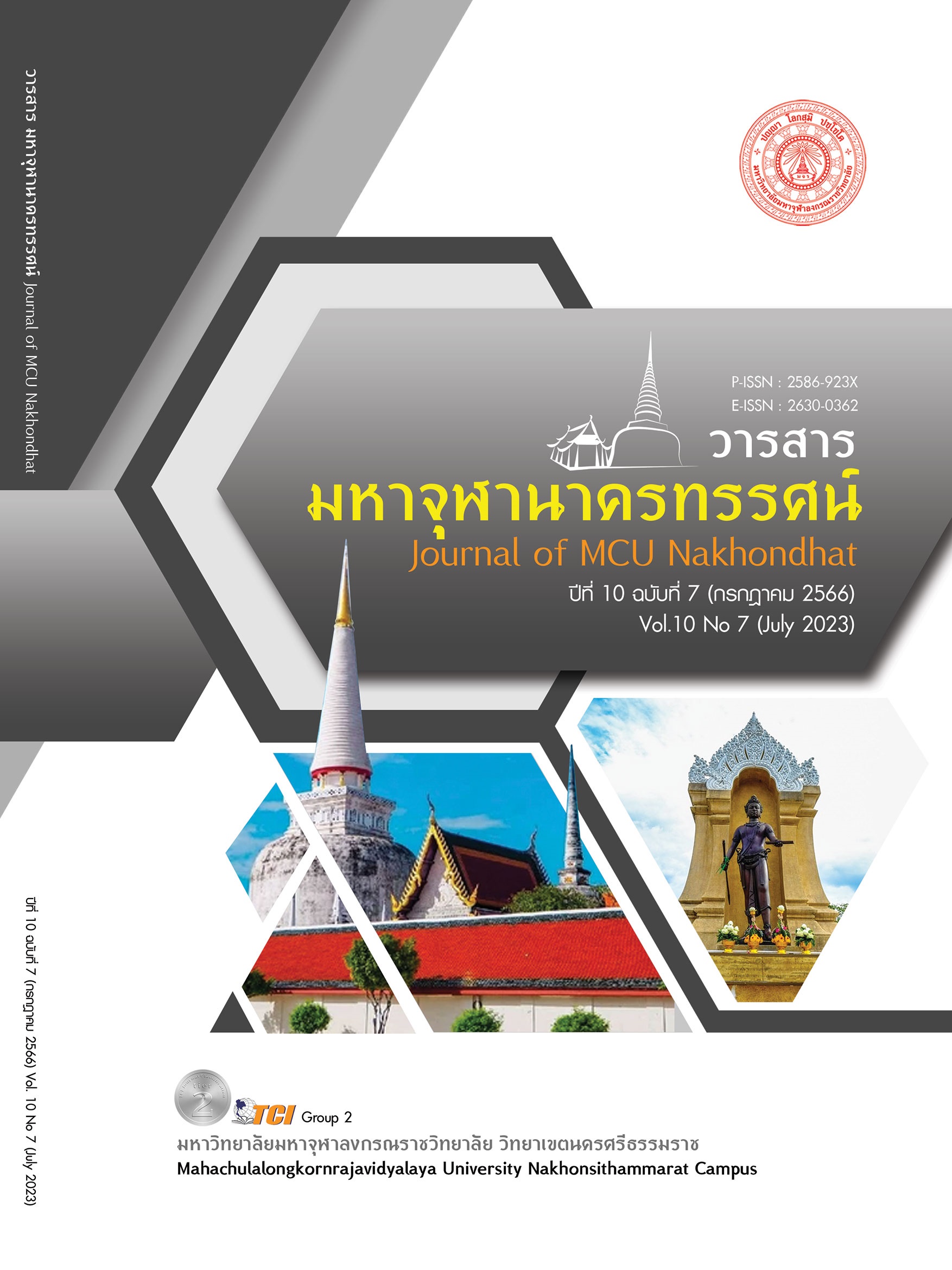THE DEVELOPMENT OF DANCE PERFORMANCE SKILLS USING DAVIES' PRACTICAL SKILLS TEACHING MODEL COMBINED LEARNING OF MATTAYOMSUKSA 1 STUDENT
Main Article Content
Abstract
The purpose of this research 1) Compare dance performance skills By using the Davies practical skills teaching model during after school compared to the criteria of 80 percent of grade 1 students. using teaching model It's an experimental research. The sample group in the research were students in Mathayomsuksa 1/2, Theppittayapanumas School, Thepha District, Songkhla Province, semester 1, academic year 2023, 1 classroom, 30 students obtained by group random sampling. The tools used in the research were: 1) a learning management plan By using Davies' practical skill teaching model, there are 3 learning management plans, totaling 6 hours. 3) Teaching Satisfaction Scale by using the Davies practical skills teaching model. using Davies' practical skills teaching model Statistics used in data analysis 1) Basic statistics were percentage, mean, standard deviation. 2) Statistics used in the analysis of confidence were Cronbach's alpha coefficient. Test the research hypothesis by testing the hypothesis using t-values. The results of the research were as follows: Using the Davies practical skills teaching model compared to the 80 percent criterion, the post-test score was higher than the 80 percent criterion with a statistical significance at the .05 level, and 2) the results of the study on the satisfaction level of teaching using Davies' practical skills teaching model Overall, it was at the highest level ( = 4.56, SD = 0.26)
Article Details

This work is licensed under a Creative Commons Attribution-NonCommercial-NoDerivatives 4.0 International License.
References
เชษฎา ดำเกลี้ยง. (2565). การพัฒนาความสามารถในการปฏิบัติท่ารำ โดยการจัดการเรียนรู้ด้วยรูปแบบการสอนทักษะปฏิบัติของเดวีส์. ใน วิทยานิพนธ์ศึกษาศาสตรมหาบัณฑิต สาขาหลักสูตรและการสอน. คณะศึกษาศาสตร์ มหาวิทยาลัยหาดใหญ่.
ทิศนา แขมณี. (2555). ศาสตร์การสอน องค์ความรู้เพื่อการจัดกระบวนการเรียนรู้ที่มีประสิทธิภาพ. กรุงเทพมหานคร: สำนักพิมพ์แห่งจุฬาลงกรณ์มหาวิทยาลัย.
เพ็ญพักตร์ ภู่ศิลป์. (2557). องค์ประกอบของภาวะผู้นำทางวิชาการของผู้บริหารโรงเรียนสาธิตระดับประถมศึกษาในสังกัดมหาวิทยาลัยราชภัฏ. ใน หลักสูตรปรัชญาดุษฎีบัณทิต สาขาวิชาการบริหารการศึกษาบัณฑิตวิทยาลัย. มหาวิทยาลัยคริสเตียน.
แพง ชินพงศ์. (2560). ความหมายและอิทธิพลของหนังสือเรียน. เรียกใช้เมื่อ 13 มีนาคม 2566 จาก http://www. Oknation.net/blog/print.phpid=152225
ไพศาล ภู่ไพบูลย์ และคณะ. (2550). หน้าที่พลเมือง วัฒนธรรม และการดำเนินชีวิตในสังคม ม.1. กรุงเทพมหานคร: อักษรเจริญ.
ริสสวัณ อรชุน. (2553). การพัฒนาสื่อประสมเพื่อการสืบทอดนาฎศิลป์ไทย. ใน รายงานการวิจัย. มหาวิทยาลัยรามคำแหงกรุงเทพมหานคร.
ล้วน สายยศ และอังคณา สายยศ. (2558). สถิติการวิจัย.(พิมพ์ครั้งที่ 13). กรุงเทพมหานคร: สุวีริยาสาสน์.
อินทิรา ดีแป้น. (2563). การพัฒนากิจกรรมการเรียนรู้ทักษะ ปฏิบัติการฟ้อนร้อยเอ็ดเพชรงามตาม แนวคิดของเดวีส์ สำหรับนักเรียนชั้นประถมศึกษาปีที่ 4. ใน วิทยานิพนธ์ครุศาสตรมหาบัณฑิต สาขาหลักสูตรและการเรียนการสอน. มหาวิทยาลัยราชภัฏมหาสารคาม.


